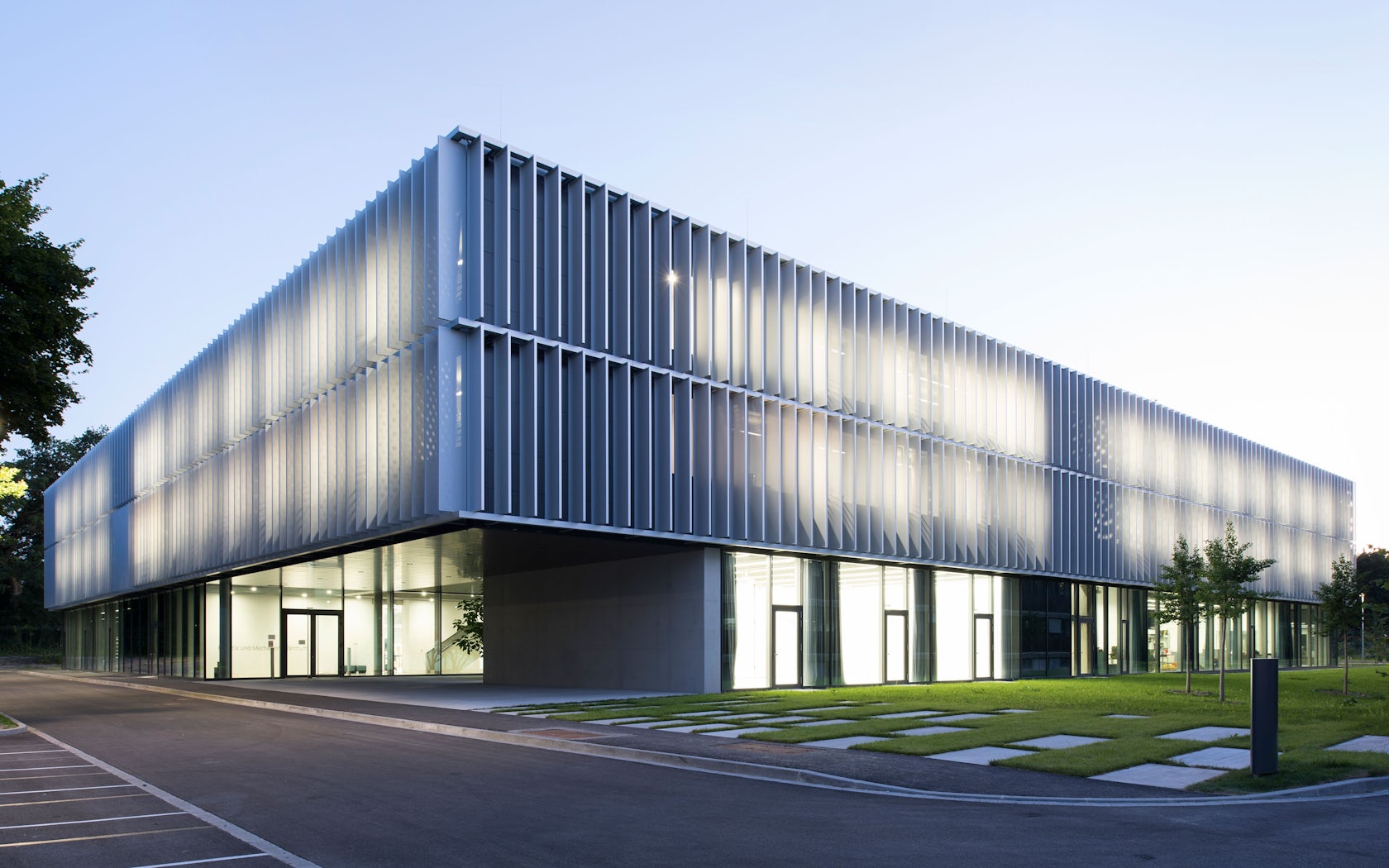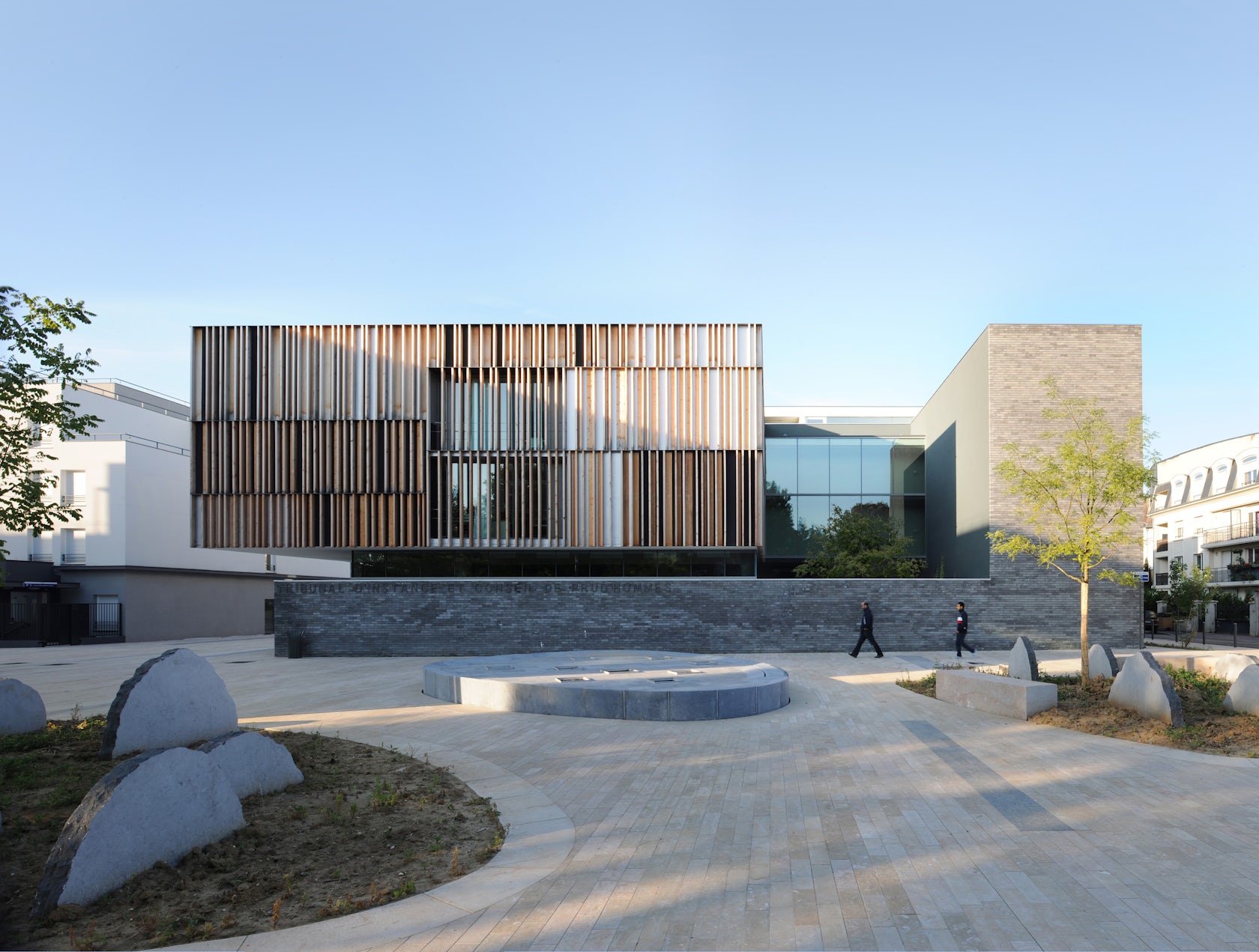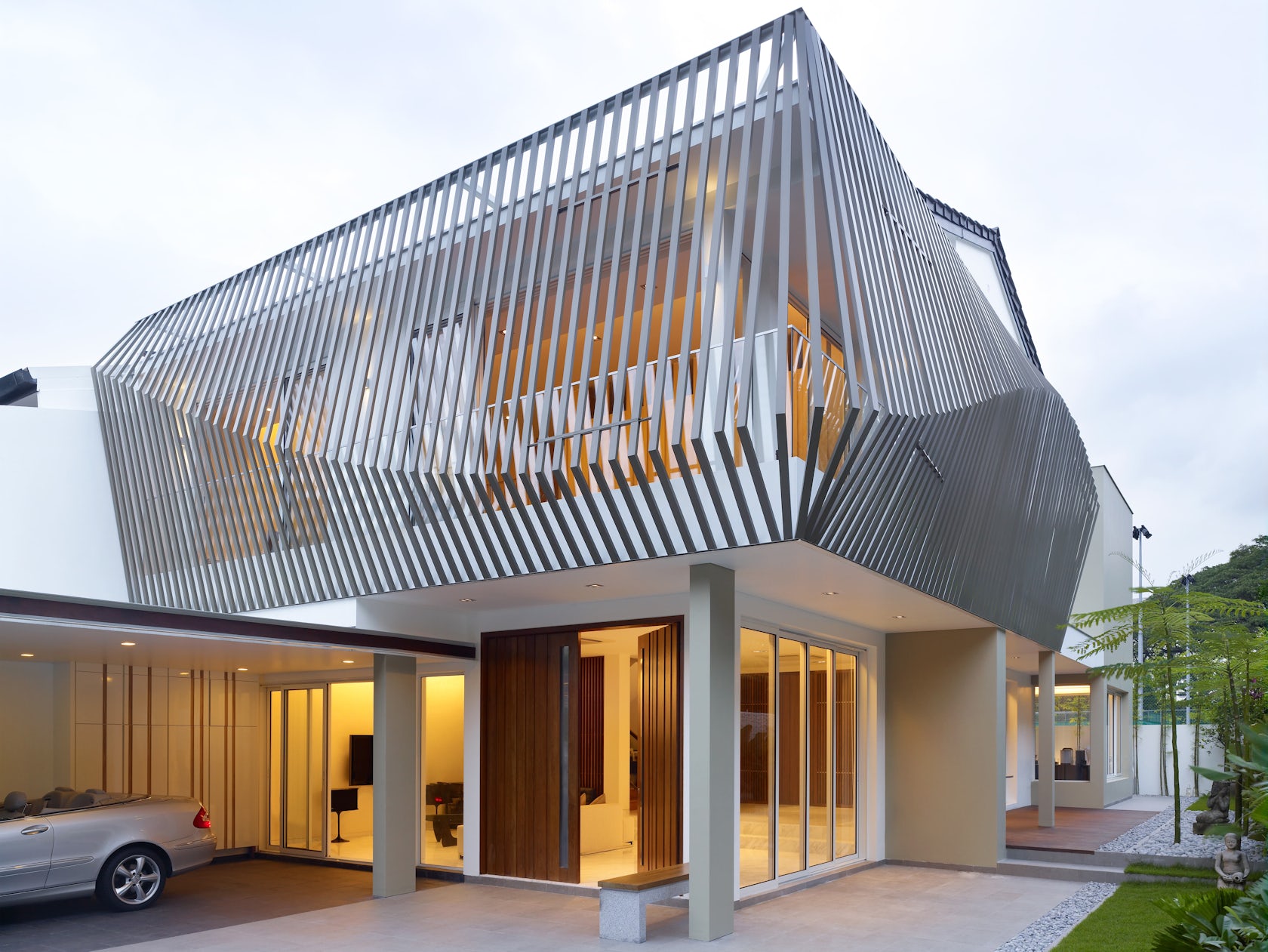Architects: Showcase your next project through Architizer and sign up for our inspirational newsletter.
Architects use brise-soleil as solutions to overheating in many hot climates with long days of direct sunlight. These permanent sun-shading structures range from simple patterns of concrete fins to more elaborate wing-like mechanisms that can be adjusted based on different solar angles throughout the day and across the seasons. Some buildings incorporate louvers into the shades to mitigate high-angle rays in summer, but also permit low-angle winter sunlight for passive solar heating with a variety of pattern structures that act as light-filtration screens on the façades of buildings.
One of the most common types of brise-soleil, simple concrete fins, became widespread after Le Corbusier’s Ministry of Education and Health was completed in Brazil. Since then, there have been many creative renditions of the typical brise-soleil, ranging from perforated screens to elaborately patterned structures encasing glass façades. For buildings today, a range of sun-shading structures combine practical functions with a unique architectural language — read on for a selection of our favorites.

© Birk Heilmeyer und Frenzel Architekten

© Birk Heilmeyer und Frenzel Architekten

© Birk Heilmeyer und Frenzel Architekten
Robotics and Mechatronics Center by Birk Heilmeyer und Frenzel Architekten, Weßling, Germany
The upper floor of this project is lined with an array of vertical fins to protect its glass windows from the sun. These fins are rotatable and do not only filter incoming light but also outgoing light at nighttime, creating a warm glow that emanates out.

© Dominique Coulon & Associés

© Dominique Coulon & Associés

© Dominique Coulon & Associés

© Dominique Coulon & Associés
Regional Court and Industrial Tribunalby Dominique Coulon & Associés, Montmorency, France
This project employs two different types of brise-soleil: the first is more traditional — vertical fins made of wood — while the second is a façade of staggered brick that creates a more ethereal filtration of light into the building.

© Archt. Narein Perera

© Archt. Narein Perera
Bird Cage by Archt. Narein Perera, Colombo, Sri Lanka
An unusual rendition of sun shading, the architect creates a birdcage-like structure on the front and back façades of the project. Although it seems counterintuitive, the birdcage creates an airy feel while typical brise-soleil tends to be constricted very close to building façades.

© TOPOS Design Studio

© TOPOS Design Studio
Mt Sinai by TOPOS Design Studio, Singapore
This brise-soleil acts as a sun-shading shell for the upper floor of the project. The screen does not only contribute to structural balance but also creates a shelter from the wind, rain and sun, ultimately making the project a sustainable one.

© Luc Boegly Photographe

© Luc Boegly Photographe

© Luc Boegly Photographe
Hachette Livre Headquarters by JFA Jacques Ferrier Architectures, Vanves, France
This project has what the architect calls an “inhabited envelope” where all the façades are fitted with a second skin of giant slatted blinds which filter natural light. The intricacy of the brise-soleil on this project also creates a strong architectural image.

© Robin Hill Photography

© Daniel Balean

© Daniel Balean
City View Garage by IwamotoScott Architecture, Miami, Florida
Appropriate for the strong Miami heat, especially to prevent cars in the garage from overheating, the architects engineered a unique perforated brise-soleil that envelops the end of the garage. This patterned structure is angled specifically to filter in light at certain angles and not at others.

© Équipe voor Architectuur en Urbanisme

© Équipe voor Architectuur en Urbanisme
Proyecto Robel by Équipe voor Architectuur en Urbanisme, Berkel-Enschot, The Netherlands
The brise-soleil in this project contributes to the building’s mission of passive climate control with the use of red-painted wooden slats. These slats run across the façade with gradience to create a dynamic variety of light from outside to inside.
Architects: Showcase your next project through Architizer and sign up for our inspirational newsletter



